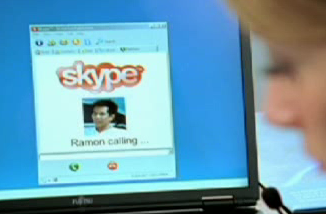A Personal Reflection on the Importance of Technology
 Editor's Abstract
Editor's Abstract
Conductor Lauren Denney Wright recently used Skype to include a composer in her college band rehearsal, even though the composer was hundreds of miles away. The composer was able to hear the rehearsal, give feedback, and talk with the students. This is a great example of how new technologies can make an impact on educational situations, and also make certain tasks and objectives more efficient. Certainly listening to a rehearsal via skype is not the same as listening live and giving feedback in the room. However, if the person could otherwise not be a part of the rehearsal, it seems like a great solution. In other words, technology will not replace important human interactions, but will provide a great supplemental tool. Wright’s story is an inspiring example of how we can embrace technology and use it to bring people together.
Stephen Danyew
While at the National College Band Director’s Association Convention in Seattle, Washington at the end of March, 2011, I attended a session on live web streaming. I came back extremely inspired and started looking at what I needed to make this happen for my students at Oklahoma Baptist University.
After meeting with a few other colleagues on campus, I decided I had everything I needed to have a rehearsal session with the composer – LIVE! Although, the composer was not going to be live in flesh in our rehearsal room, he would be live via Skype and would be able to listen to our rehearsal through ustream.tv. I told the students we were going to make it happen, and they were so excited!
The day came (April 7th, 2011) when we would be rehearsing Steven Bryant’s Suite Dreams with him collaborating with us through live streaming. We did have a few technical difficulties (the louder moments in the piece were coming across distorted on the composers’ side) but everything else worked great! What a wonderful experience it was – the students were so excited to work with a composer.
It is one thing to perform works of Mozart, Liszt and Grainger, but to actually work with a LIVING composer LIVE puts everything into a whole new perspective. As conductors and musicians, we strive to interpret the music on the page the best we can. What exactly did Grainger mean when he placed that staccato marking over that note? A staccato can mean many different things depending on the context. What exactly did Mozart mean with that phrase line? Are we supposed to re-articulate notes underneath even though it is “slurred?” With all these questions, sometimes it can get a little frustrating. Trust me, we ALL go through it! The main thing to keep in mind is that every single note on the page was written by the composer and every note meant something very specific to him or her. It is the conductor and musicians’ job to interpret the music and serve the music for the composer, not for his or herself.
Well, having the composer LIVING and, even better, participating LIVE in our rehearsal was such an amazing experience. He could say “Dr. Denney Wright, that tempo is just a little fast, could you slow that down please?” To which I would say “Of course Mr. Bryant. It is YOUR piece after all!” There is not much room to argue or question what a composer says since it is his piece, his dreams, his work, his notes on the page. This also brings the players closer to the music and allows them a greater understanding of the piece – the students are able to become part of the music instead of just playing the notes.
I am hoping that we are going to be able to utilize this new technology and collaborate with composers when we are not able to fly them to campus. Allowing the students time to ask questions live to Steven Bryant was such a great opportunity. They asked questions such as “What is on your iPod?” and “Why do you write for the wind band?” It was one-on-one time with the composer that might not have happened otherwise.
-Lauren Denney Wright, D.M.A – Director of Bands, Oklahoma Baptist University

Leave a Comment: